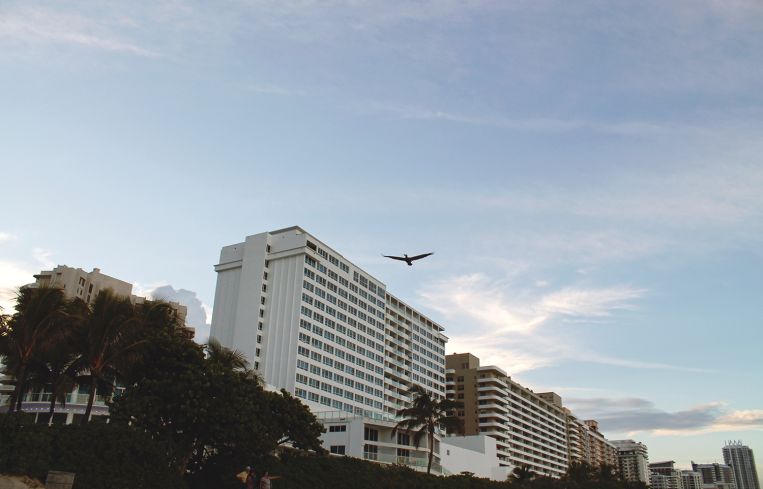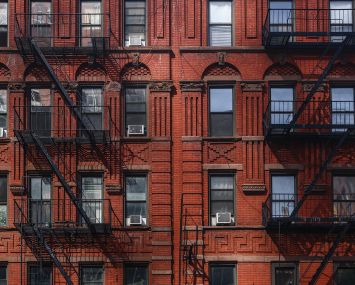Post-Champlain Reforms Will Hit Aging South Florida Condos Hard
They'll also present developers new opportunities
By Julia Echikson April 1, 2024 6:10 pm
reprints
Some South Florida condo owners are in deep trouble.
Three years after the deadly collapse of the Champlain Towers South in Surfside, Fla., regulations meant to prevent another building disaster are coming into effect — and look set to cost condo owners, especially those living in aging buildings.
This financial hit comes against the backdrop of skyrocketing home insurance prices and a cooling luxury condo market. But for developers, these buildings offer great opportunities, though purchasing aging buildings holds serious challenges, too.
The new law bans condo associations from waiving financial reserves, a common practice to prevent costly charges for homeowners, but one that can allow buildings to fall into disrepair. By the beginning of next year, those associations will also be required to have done a “structural integrity reserve study” (SIRS) to determine how much to set aside to fund structural repairs coming due in the next decade, which is likely to produce hefty bills for many owners.
“This is going to be a very rude awakening,” said Joseph Hernandez, a real estate lawyer at Bilzin Sumberg. “Frankly, I, and others in our industry are concerned that a lot of people just can’t afford it.”
Before Champlain’s collapse, which killed 98 people, owners typically paid the minimum amount for maintenance, and most condos in Florida went mostly unchecked. Only Miami-Dade and Broward counties had recertification requirements beginning at the 40-year mark. But even those measures were lax and prone to delays as evidenced by the Champlain building. For years, its homeowners association had pushed off repairs, and it was finally about to start renovations for its 40-year recertification when tragedy struck.
Now the “benchmark put in place by the state is almost like the car manufacturer telling you that you need an oil change every 5,000 miles,” said Greg Main-Baillie, a 20-year veteran at Colliers, who oversees construction projects.
The new regulations not only require owners to prepare for repairs that will come due in the next decade, they’re also forcing homeowners to make up for lost time. Say a 50-year-old building has a roof that had an estimated useful life of 20 years. It never leaked, so the association never fixed it. Come Jan. 1, the roof that’s 30 years past useful life will have to be replaced imminently — not over the coming decade.
Take the Palm Bay Yacht Club condo in Miami Shores. Last year, homeowners were quoted $46 million in repairs, which comes to $175,000 per unit on average. While the report was written a few months before the legislature passed the new regulations, the price tag is an indication of what’s to come for some aging buildings that haven’t been properly maintained in years, if not decades, experts say.
“All deferred maintenance does is make anything that should have been taken care of now more expensive to do in the future,” said Doug Weinstein, senior vice president of operations, Southeast at Akam, which helps condo associations with construction projects.
With these assessments looming, owners will face a tough choice: pay up or sell. But offloading a condo is no easy task. The South Florida market, after red-hot growth during the pandemic, has cooled. The median sale price of a Miami condo fell by 2.5 percent in 2023, according to data from Redfin. Not everyone wants to dispose of their home, either. Many owners are on fixed incomes. Some have also lived in their condo for years, or even decades, and have little appetite to move.
For would-be buyers, the assessment represents an additional liability. Demand for condos has ebbed as some Northerners who decamped to Florida during the pandemic have returned to their old hometowns. At the same time, high interest rates and expensive home insurance are also deterring buyers. While Florida’s home insurance market has moderated since state lawmakers passed new regulations in 2022, the Sunshine State still has some of the nation’s most expensive rates, averaging $1,968 a year, according to March 2024 data from Quadrant Information Services.
For sellers of aging condos, the last remaining set of viable buyers then could include developers, for whom these buildings present a great opportunity. If the conditions are right, a developer can buy out all the owners in an aging condo building, demolish the existing structures, and build new, often luxury condos or hotels on prime real estate.
But such buyouts are famously not easy. “There’s a lot of moving parts,” said Julian Zuniga, a Colliers broker who represents associations. “So they really only work when there’s a meeting of the minds between what a developer is willing to pay and what the owners think is enough of a premium for them to sell.”
Though regulations vary from building to building, developers must acquire at least 80 percent of units to gain control of the homeowners association and shutter the entity in what’s known as a condo termination. The threshold commonly rises to 95 percent, making a bulk buy a tall ask for buildings that contain hundreds of units.
Plus, holdouts often sue, as they did at the Biscayne 21 condo building. After years of negotiations in 2022, Two Roads Development announced that it closed on the bulk purchase of the waterfront property for $150 million. The developer later unveiled plans to build a 55-story, Edition-branded complex on the site with prices starting at $1.7 million. But 10 owners refused to sell and sued. Just this month, a state appeals court in Florida blocked Two Roads’ buyout, granting the holdout owners a temporary injunction.
The ruling is not only throwing cold water on Two Roads’ plans, but it could also upend other terminations that are in the works. Two Roads Development has vowed to take the case to Florida’s Supreme Court. (Hernandez represents Two Roads Development in the case.)
“The law is written in a manner designed to prevent a small group of holdouts from thwarting a termination that is supported by an overwhelming majority of residents. Any interpretation to the contrary threatens the very premise of condo terminations serving as a viable exit strategy for cost-burdened residents eager to realize the value of their home, thus setting a dangerous precedent for aging properties across the state,” according to a statement from Two Roads Development.
Not every condo is a prime target for takeover. Because of the challenges associated with terminations, developers will typically target only properties along the water, which can then attract the highest condo prices.
Even when they offer owners lots of money, developers have struggled. A year ago, Terra, a prominent Miami developer, offered an eye-watering $500 million to buy out the 570-unit Castle Beach Club in Miami Beach. But contracts for the majority of owners expired in January, The Real Deal reported. While talks remain ongoing, and the developer hopes to close the deal by the end of the year, another joint venture, led by Related Group, Miami’s largest condo developer, pulled out after encountering resistance, despite making the same offer. (Zuniga represents the Castle Beach Club association.)
Another wrinkle for condo owners is the so-called “50 percent rule.” Florida statutes stipulate that if an owner spends more than 50 percent of a building or a unit’s appraised value to upgrade it, the owner must bring the entire property up to current code standards. In practice, the rule has required owners to completely redevelop their properties and could prime more buildings toward bulk sales. Amid a tight lending market, some developers are waiting on the sidelines, hoping that, as the assessments come in, more owners will become amenable to selling.
The coming year will test many buildings. “It’s time to pay the piper!” Weinstein said.
Update: The story was updated to include a statement from Two Roads Development.



